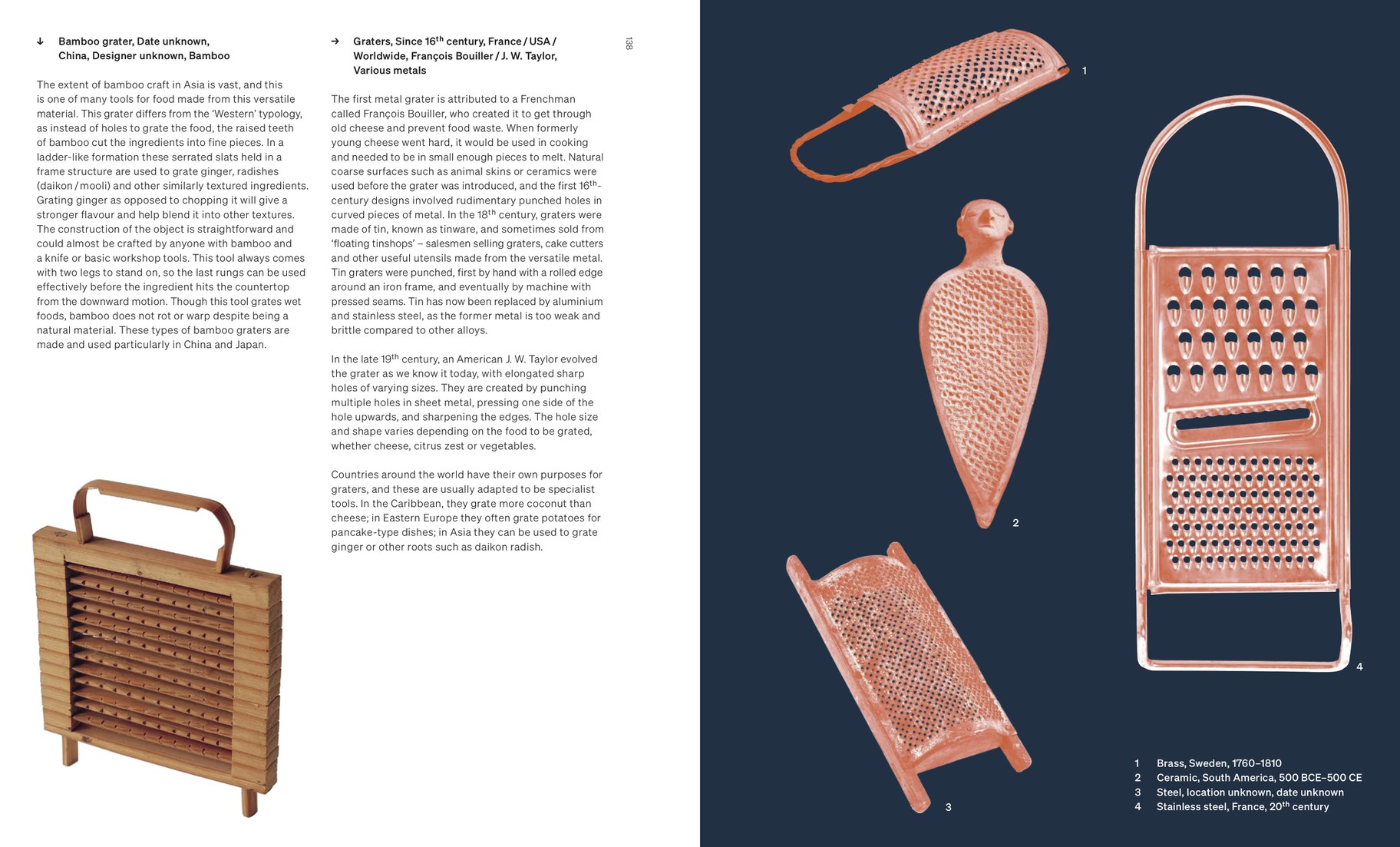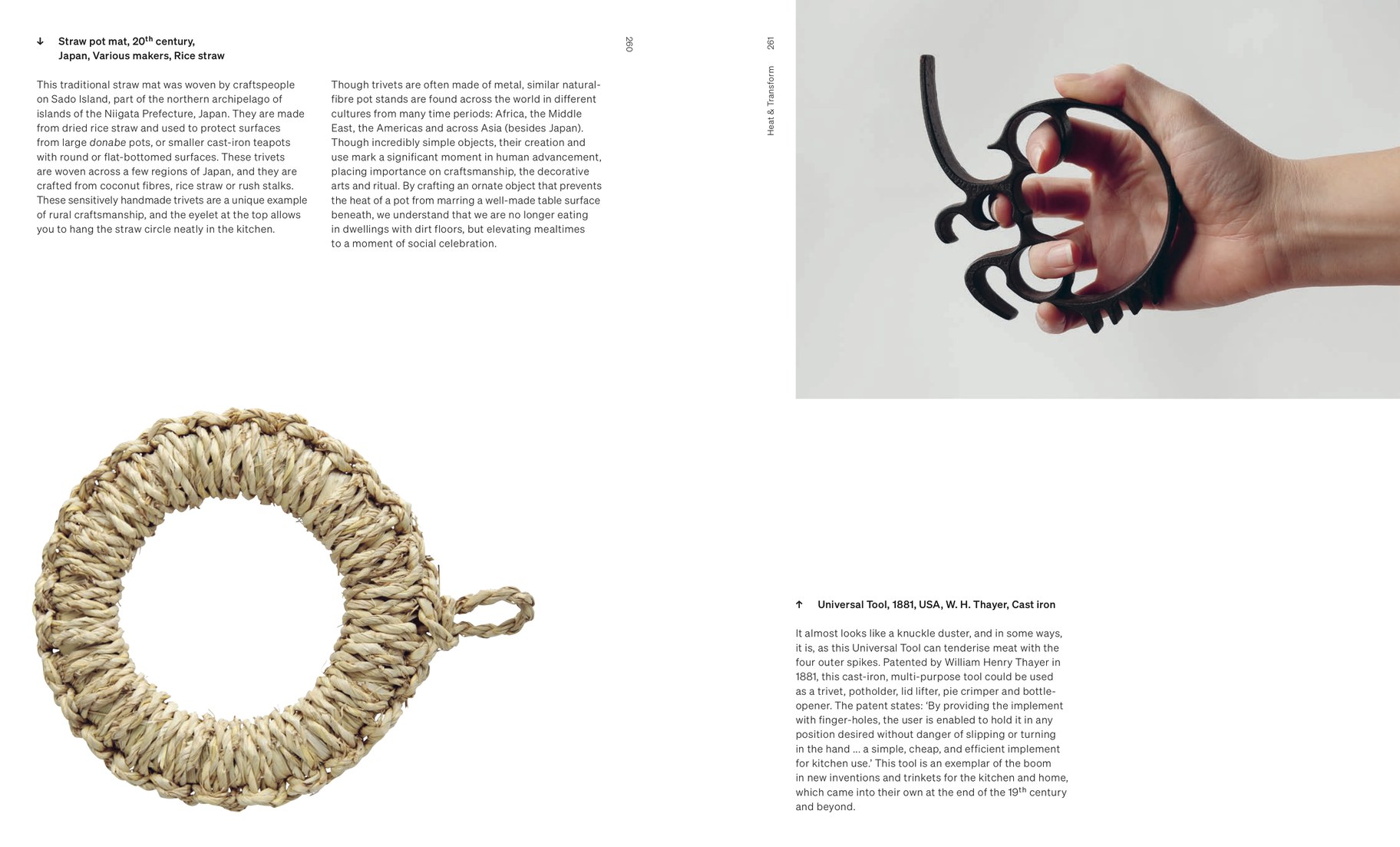Design curator and writer Corinne Mynatt became fascinated with objects she found at flea markets and began researching their history and function. She takes us inside her new compendium, “Tools for Food: The Objects that Influence How and What We Eat,” to discuss the forms, ingenuity, and overlaps of kitchen implements across time and culture.
The following interview has been edited for length and clarity.
KCRW: What instigated your obsession with kitchen tools?
Corinee Mynatt: It would probably have started with my art and design background. I started as an artist, and then I eventually transitioned into being a designer. And when I left my job a few years ago, I was wondering what was the thing that I was obsessed with that was going to carry me through the next phase of my career. And I remembered finding … these incredible objects … in flea markets in Paris, Tokyo, and Berlin, and [having] such a curiosity of the beauty of these objects, their form, but also who made them, when, why, what was happening around that time. And so it was that kind of design aspect of these objects that fascinated me. And when I looked for a guide or reference that went into this aspect of these objects, there wasn't one. Perhaps from an antiques point of view or something like that, but not a survey of design. And so that is how I started my journey.
Paging through the book, it’s fascinating how little so many different categories of tools have changed over time.
Exactly … I'm sitting here looking at the pages with peelers, and there's a Chinese peeler, which is a certain form, the REX peeler from Switzerland, and then the Good Grips peeler that was modified and created in the 20th century. And the function remains the same for many things, but is created by different cultures in different ways.
Another thing I love about this book is it looks at these similar objects. So for example, the mortar and pestle. In South America, it's used to grind masa and corn, and in Italy, for pesto. And larger ones that are made of wood are used in Africa and East Asia to pound rice or grains. We use so many of the same objects across the world, but for different foods and different purposes. And that's one of the most exciting things that I love in this book.

Kitchen objects are used across the world for different purposes and with a variety of foods, though the designs have remained the same over centuries. Photo courtesy of Hardie Grant.
In the steaming chapter, there’s a Japanese bamboo steamer that literally could be an art object that hangs on the wall. Could you talk about that one?
The shikizaru, as you say, is a piece of artwork in itself. It looks like a very delicate basket. It's reminiscent of wicker chair bottoms and exquisitely crafted chairs from the 18th century across the world. And this object also speaks to me so much about Japanese cuisine and how extraordinary it is, but also the craftsmanship that's so prevalent in Japanese kitchen tools [and] also across their culture. This object in particular is used to steam delicate foods, such as conger eel, or other delicate fishes that need a delicate treatment. And the object is also only used about 20 times because it is so delicate. It's exquisite to look at. I have it in my kitchen and I haven't used it yet because it's so beautiful, but I love to look at it.
Talk about the Indian boti, featured in the cutting and chopping section of the book.
The boti is a curved knife, usually mounted on a piece of wood so that it can be used on the table or on the ground. I love this object because it's the opposite of how we think about cutting things. Instead of using your knife to press onto an object to cut it, the object — such as a squash, or a cucumber, or whatever it is — is pressed onto the knife. So the curve is kind of facing towards you, and you press the food onto it to slice it, which you can do very, very quickly. And then the food slices fall underneath. I love that it's just such a contrast to how we think about how we're going to cut food. It's just another way to do it. And it shows how different people have invented different things all over the world for thousands of years.

Design curator Corinne Mynatt calls Thayer’s universal tool (right) her favorite discovery. Made in the U.S. in the 19th century, it served a variety of functions, including meat tenderizer, lid lifter, and trivet. Photo courtesy of Hardie Grant.
What are some of your favorite tools from the very beginning of industrialization?
I'm going to go to when things like that started to appear in the late 19th century, because it was this time of just a flurry of inventing. And the one that I would like to talk about is the one that appears on the back of the book. It's from 1881. It's called Thayer’s Universal Tool. It's cast iron and was made in the United States. It looks like a knuckle duster, but in fact has a few different functions. It's a meat tenderizer, a pot lifter, a lid lifter, a trivet. There's many other things I'm sure that you can work out to deal with if you had it in your hand. But it's just a very strange object and a real anomaly from that time. And it was certainly an interesting discovery to come across in my research that really stuck out to me.
Perhaps my favorite entry in the book, because it's just so haphazard, is the coat hanger.
I think for most Americans, this coat hanger is just sort of part of growing up, of camping outdoors when you're younger. And it is a tool for food. Don't forget that. There's small moments like this of ingenuity, where not only was it ingenious to invent the coat hanger and all of this already, but then for someone else to transform it into a marshmallow roaster, it's just fantastic. It's so simple, and it evokes such nice memories for a lot of people.

With an art and design background, Corinne Mynatt gravitated to objects that fascinated her that she found in flea markets in Paris, Tokyo, and Berlin. Photo by Flora Maclean.
Tell us about the Tala Indian curry measure.
It's funny because actually, they were making it in the U.K. and Germany, this sort of basic measure that was just used for baking or maybe other purposes like gravy. The original one was [for] very basic, standard food things. And then the curry measure was created in the early 2000s.
Can you describe the shape, because here in America, we don't use measuring objects that are of this shape?
It's a conical shape that has a base so it can sit on the table. And on the inside are the different measurements. So there's, I think, nine different recipes that you can use the cone for, with lines that measure how much you should have of each thing. So for rice, you put the rice in up to a line and then you put the water up to a line. Then there's one for chicken jalfrezi, and it tells you how many tomatoes to put in and the spices and the chicken. And then for chapati, which is a flatbread that you eat with curries, how much wholemeal flour and water and this sort of thing to put in. So it's all there. It's pretty much like a Pyrex jug, but it tells you the ingredients to put in so that you can cook curries.
